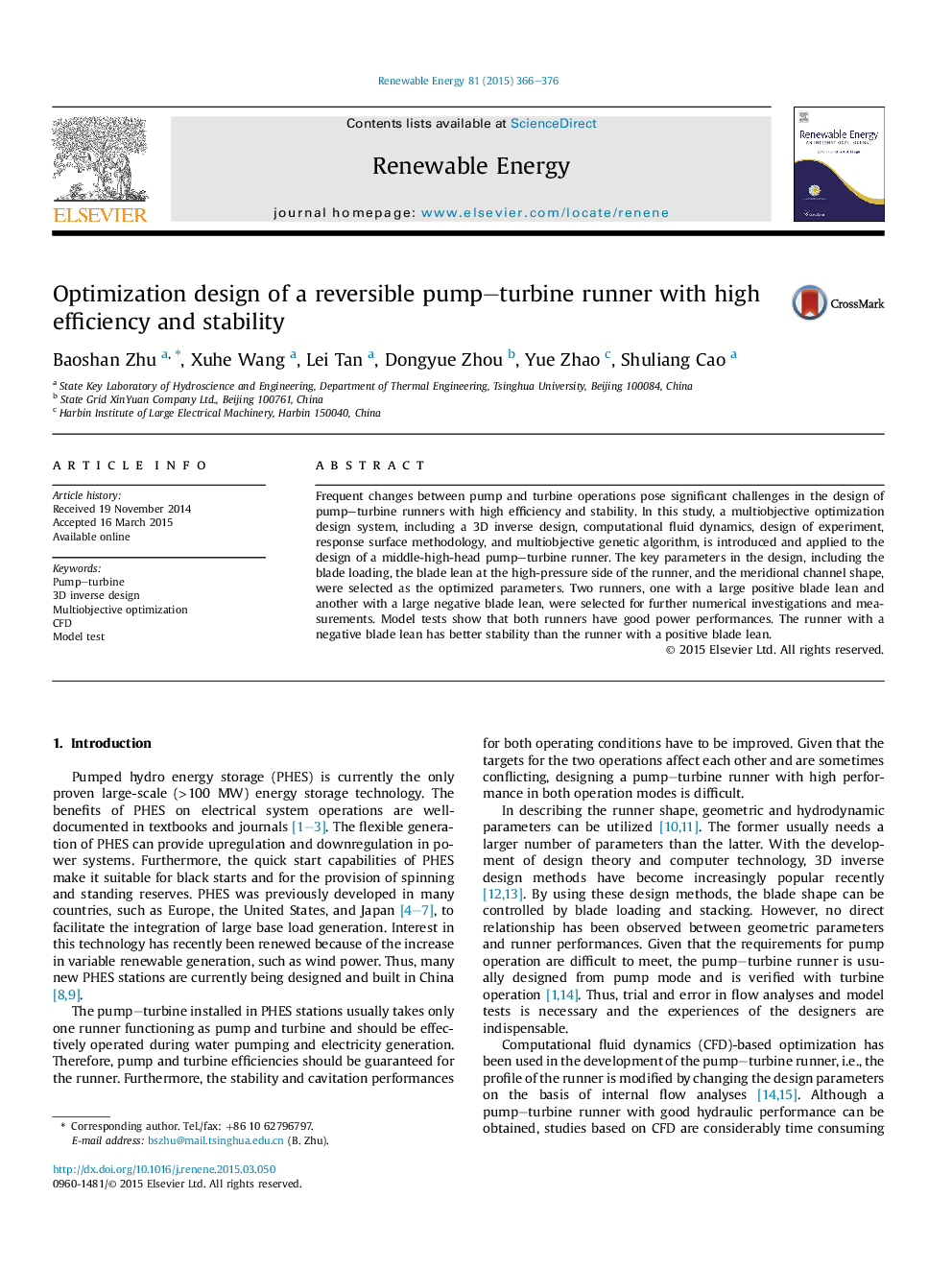| Article ID | Journal | Published Year | Pages | File Type |
|---|---|---|---|---|
| 6767043 | Renewable Energy | 2015 | 11 Pages |
Abstract
Frequent changes between pump and turbine operations pose significant challenges in the design of pump-turbine runners with high efficiency and stability. In this study, a multiobjective optimization design system, including a 3D inverse design, computational fluid dynamics, design of experiment, response surface methodology, and multiobjective genetic algorithm, is introduced and applied to the design of a middle-high-head pump-turbine runner. The key parameters in the design, including the blade loading, the blade lean at the high-pressure side of the runner, and the meridional channel shape, were selected as the optimized parameters. Two runners, one with a large positive blade lean and another with a large negative blade lean, were selected for further numerical investigations and measurements. Model tests show that both runners have good power performances. The runner with a negative blade lean has better stability than the runner with a positive blade lean.
Related Topics
Physical Sciences and Engineering
Energy
Renewable Energy, Sustainability and the Environment
Authors
Baoshan Zhu, Xuhe Wang, Lei Tan, Dongyue Zhou, Yue Zhao, Shuliang Cao,
